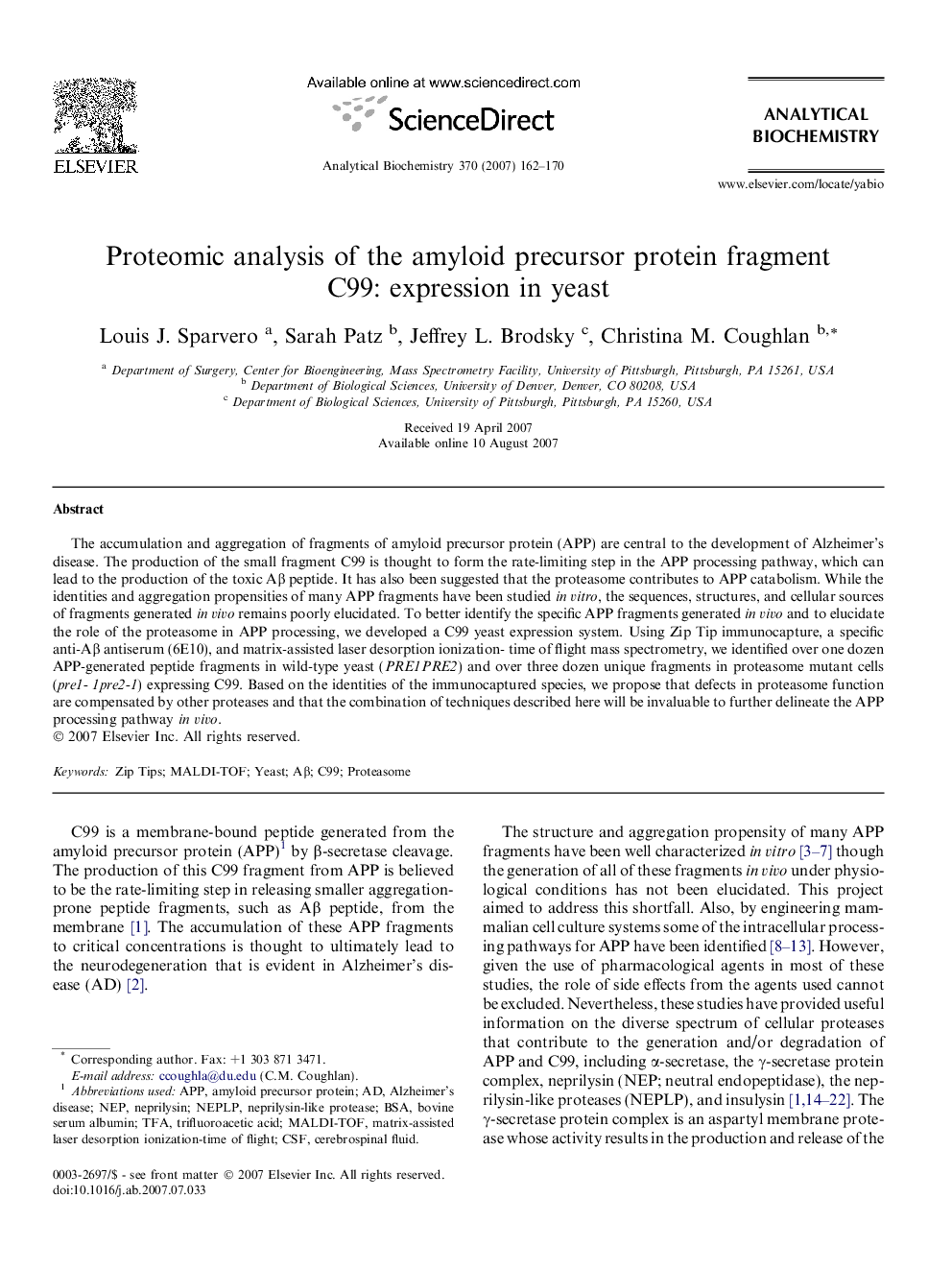| Article ID | Journal | Published Year | Pages | File Type |
|---|---|---|---|---|
| 1176479 | Analytical Biochemistry | 2007 | 9 Pages |
The accumulation and aggregation of fragments of amyloid precursor protein (APP) are central to the development of Alzheimer’s disease. The production of the small fragment C99 is thought to form the rate-limiting step in the APP processing pathway, which can lead to the production of the toxic Aβ peptide. It has also been suggested that the proteasome contributes to APP catabolism. While the identities and aggregation propensities of many APP fragments have been studied in vitro, the sequences, structures, and cellular sources of fragments generated in vivo remains poorly elucidated. To better identify the specific APP fragments generated in vivo and to elucidate the role of the proteasome in APP processing, we developed a C99 yeast expression system. Using Zip Tip immunocapture, a specific anti-Aβ antiserum (6E10), and matrix-assisted laser desorption ionization- time of flight mass spectrometry, we identified over one dozen APP-generated peptide fragments in wild-type yeast (PRE1PRE2) and over three dozen unique fragments in proteasome mutant cells (pre1- 1pre2-1) expressing C99. Based on the identities of the immunocaptured species, we propose that defects in proteasome function are compensated by other proteases and that the combination of techniques described here will be invaluable to further delineate the APP processing pathway in vivo.
